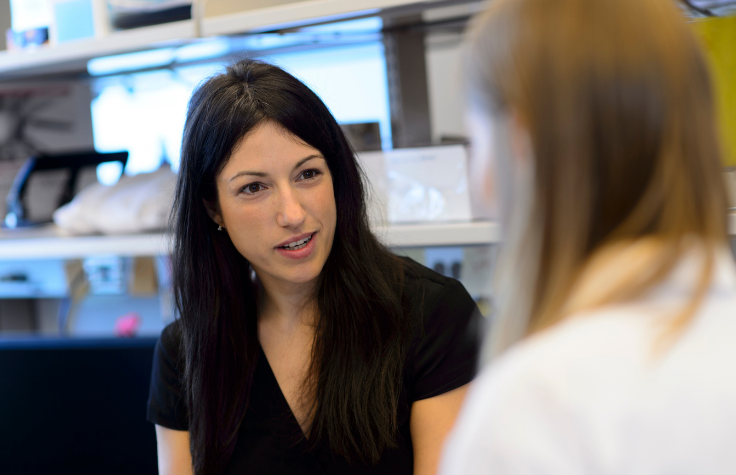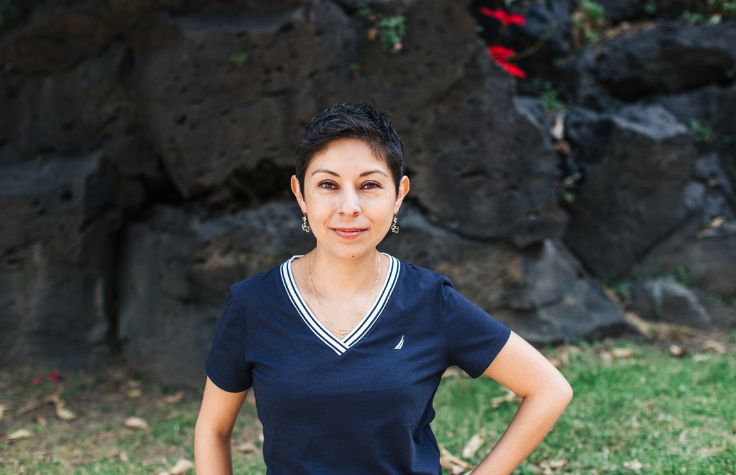
September 23, 2021
Cancer is a devastating disease that is quickly becoming the leading cause of death worldwide. In 2020, there were nearly 10 million cancer deaths around the globe. But with the advent of genomics and a democratized access to specialized data, cancer researchers have been able to make great strides in recent years, and cancer survival rates have increased thanks to advancements from research.
September 24 marks World Cancer Research Day. The initiative aims to promote research in the oncology field and calls on institutions, leaders, and enterprises to increase their efforts and accelerate momentum as they strive to lessen the burden of this heartbreaking disease.
At Memorial Sloan Kettering Cancer Center (MSKCC) in New York City, Assistant Attending Computational Oncologist Elli Papaemmanuil, PhD and her lab utilize Illumina technologies to analyze multiomic data (any combination of DNA, RNA, epigenetics and protein) from thousands of patients to gain actionable insights into cancer. “There is so much information embedded in the cancer genome that speaks to a patient’s risk predisposition, disease state, and the likely response to treatment,” says Papaemmanuil. “We now have the technologies that allow us to access that information. When thinking about a new problem, reading a paper, or working on a challenging patient, clinicians’ thought processes now immediately jump to thinking about how they can use the latest technologies to solve a problem. I find this shift incredibly inspiring. It shows that we’re just at the very beginning of adopting these technologies in a much wider context.”
Danny Wells, PhD, is the Senior Vice President of Strategic Research & Scientific Co-Founder of Immunai, and is equally enthusiastic about the power of next-generation sequencing to gain critical insights. “I’m a true believer in genomics—I think the sky’s the limit. This technology will become central to every major disease research area.”
His company, also based in New York City, is mapping the body’s immune system using multiomics and AI in order to discover new therapies. Wells’s background includes biology and applied mathematics, but today he focuses on immuno-oncology research. “For me, there are two really profound differences between working with genomic data in the context of human health compared to the computational work I did in the past. The first thing is that I just love genomic data. It’s so incredible that you can take these unbiased approaches. I don’t think any other data types give you access to that much information. Secondly, it’s meaningful to be working on human samples and to know that discoveries you’re making can help identify new treatments for patients, new ways to get them the right therapy.”
Wells is one example of how advances in sequencing have attracted a range of talent to the field of genomics research. According to Papaemmanuil, the global research community is no longer just trained scientists predominantly studying genomics and data science. “Now, individuals that may have diverse backgrounds in cell biology or molecular biology are routinely incorporating technologies that allow the decoding of the cancer genome, methylome, and transcriptome on a daily basis. An important point is that these technologies are not only generating the data, but are also naturally paired with an associated workflow for quality control and data mining after the data generation. The stability of that output is what has effectively enabled and democratized the adoption of these technologies across disciplines. The high quality of the output has enabled very reliable new discoveries for us and for many others.”
But there is much more work to be done, and it begins with the researcher. “The more comprehensively we interrogate the genome, transcriptome, and methylome, the faster we will be able to develop and validate relevant biomarkers,” she says. “Once we have exhausted our search space, we will be able to link multiomic data to patient response status and outcomes in all our correlative studies and clinical trials.”
To read Illumina’s Cancer Research Methods Guide, click here.
To support cancer researchers, visit World Cancer Research Day and use the hashtag #WorldCancerResearchDay on social media.


